SafeSalt - Microencapsulation Impact on Water and Sodium Intake
QUESTION: Does water intake differ in horses fed supplemental salt compared to free-choice access to salt blocks?
Abstract available in the 2013 Proceedings of the Equine Science Symposium
ME Gordon* and ML Jerina, Purina Animal Nutrition Center, Gray Summit, MO 63039
Available at https://www.sciencedirect.com/science/article/pii/S0737080613001755
Note: This trial was conducted on specifically on SafeSalt, which uses microencapsulation technology (also used for Complete Electrolytes powder)
Background
- Salt (electrolyte) balance is required for horses to maintain proper hydration and organ function.
- Typical horse feeds are low in sodium, and exercise, stress, and environmental temperature can impact sweat (and therefore electrolyte) loss, so salt/electrolyte supplementation is needed to help horses maintain adequate levels.
- Table salt has a strong flavor, so some horses will avoid salt intake intentionally, and the granular nature of table salt means it can easily fall to the bottom of feed buckets and not be consumed
- Salt has been shown to aggravate or possibly cause gastric ulcers, so horses with ulcers may be even more likely to avoid salt intake
- Microencapsulation of salt surrounds salt particles with a thin layer of oil in order to mask the flavor and prevent the salt's exposure to the stomach wall, which may improve palatability
Aim of Study
A series of experiments were performed to test the hypothesis that horses receiving a supplemental salt product (SafeSalt®, Science Supplements) would increase voluntary water intake compared to horses with access to free-choice salt blocks.
Study Design
- Randomised = which horses were given placebo was pre-determined by a random system rather than a person deciding at the time of seeing a horse. This removes bias in the results caused by selecting only certain horses to have a particular treatment.
- Crossover trial = all horses received both active supplement and placebo allowing the response of an individual horse to each treatment to be compared. Crossover trials are potentially more efficient than similar sized, parallel group trials in which each horse is exposed to only one treatment.
Study Outline
A randomized, cross-over study design was used with 14-day treatment periods and 7-day washout periods between treatments. Horses (n=10, 5 mares, 5 geldings, 5-18yr, mean BW 554kg) were housed in individual stalls with attached dry lots, and received 0.5%BW pelleted concentrate/day (Strategy® GX, 0.18% added Na DM, Purina Animal Nutrition, St. Louis, MO) and 1.5%BW grass hay/day (0.021% Na Exp 1; 0.059% Na Exp 2, DM). Horses were acclimated to water buckets for 5 days followed by a 7-day supplemental salt withholding period before the first treatment was offered. Water intake was measured once daily (0730h) by digital scale. Horses were fed SafeSalt to provide an additional 0.04g Na/kg BW/day (Exp 1; April-June, 2012) or 0.06g Na/kg BW/day (Exp 2; Oct-Dec, 2012). SafeSalt was offered with the daily concentrate, split between feedings at 0700h and 1500h. Orts were measured once daily (0630h). Plain white salt blocks (1.8 kg) were provided in plastic coated holders attached to each stall wall during the salt block treatment periods. Salt block weight was recorded by digital scale six times per 14-day period (0730h) to limit handling. Daily mean ambient temperature was recorded to determine if weather affected water intake. ANOVA was done with mixed models (SAS 9.2, 2010) and least squares means were compared using Fisher’s LSD. Covariate of temperature was used to control for possible effects of temperature on water intake.
Study Results
Experiment 1
- There was no difference in water intake between horses receiving SafeSalt versus access to salt block (P=0.2534, Table 1).
- Temperature affected water intake, (P<0.0001, Table 1) with a positive slope estimate of 1.20 ± 0.08L/°C.
- Daily salt intake within each experiment was different between treatments (P<0.0001, Table 1) and highly variable for salt blocks.
Experiment 2
- There were significant effects for treatment (P=0.0201) and temperature (P<0.0001, Table 1).
- Water intake was higher for horses consuming SafeSalt, and temperature had a positive effect on water intake with a slope estimate of 0.46±0.05L/°C.
- Daily salt intake within each experiment was different between treatments (P<0.0001, Table 1) and highly variable for salt blocks.

Table 1. Daily water and sodium intake (above basal diet level) by horses provided supplemental salt or access to salt blocks1
1Differing superscripts within column denote P < 0.05 for each experiment; 2LS Mean ± SE; 3Mean ± SD; 4SB Na intake is calculated from 6 measurements per treatment period
Take Home Message
- Feeding SafeSalt, regardless of temperature, lead to higher salt intake when compared to free salt block access.
- Salt intake was very low and variable in horses given access to salt blocks in cooler weather, indicating salt block access may be insufficient to provide required levels of sodium for horses.
- Providing 0.06g Na/kg BW/day of SafeSalt during cooler weather conditions increased water intake in horses compared to voluntary sodium consumption from salt blocks.
- Further research is needed to access the effects of higher levels of SafeSalt administration in warmer weather.

